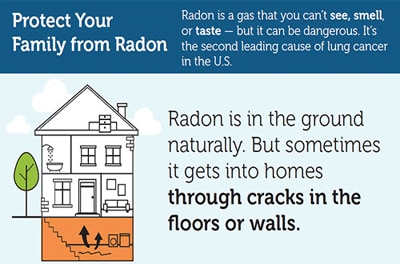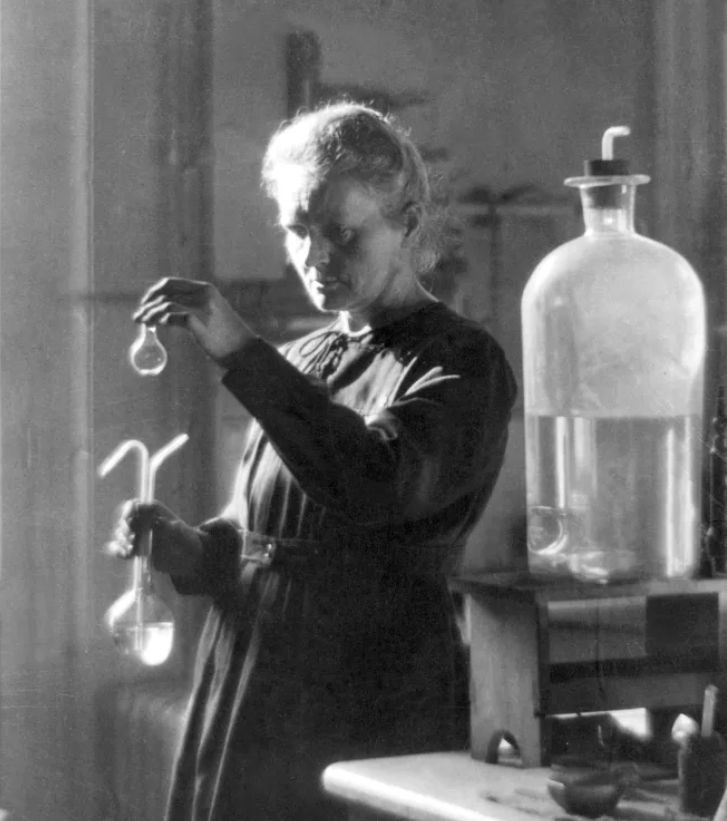View the updated "Person's Overview to Radon" to find out more concerning evaluating your residence. Radon originates in granite down payments located deeply below ground. The gas can enter into buildings by leaking in through cracks in the structure, openings around drains or under basement slabs.
How much does it cost to fix radon in house?
The cost of a mitigation system may vary according to the home's design, size, foundation, construction materials and the local climate. Radon reduction systems average costs nationally are $1,200 with a range from $800 to $1500 common depending on house and market conditions.
The research study paid close attention to the cohort's degrees of smoking cigarettes, job-related direct exposure to health hazards and also education and learning accomplishment. However, unlike most of the property radon studies, the research was not population-based. Errors in retrospective exposure evaluation might not be eliminated in the finding at low levels.
For direct exposure requirements to be efficient, they need to be established for those most at risk. You can not see, odor or taste radon, yet it may be a trouble in your house. The Surgeon General has cautioned that radon is the second leading cause of lung cancer cells in the United States today. If you smoke and also your home has high radon levels, you're at high risk for establishing lung cancer. Some clinical researches of radon exposure show that kids might be extra conscious radon.
The dangers to your wellness from radon
What do you do if your house has radon?
Radon can seep into any home that is in contact with the ground. It is undetectable unless you perform a radon test. It is the second leading cause of lung cancer and according to the EPA and CDC, it kills more than 20,000 annually. It is not something you want in the home you are buying.
If you can keep your interior radon levels at 2 pCi/L or reduced, you'll face very low enhanced risk of creating lung cancer cells due to radon. Just two non-smokers out of 1,000 will certainly establish lung cancer cells specifically due to the direct exposure when you reach the 1.3 pCi/L level that is regular for indoor air. It's impossible to get to a no percent risk in locations where radon is common, however lowering the gas level as high as is practical deserves the effort. Smoking cigarettes remains the number one cause of lung cancer in the United States.
According to the Environmental Protection Agency, radon is just one of one of the most major health issue facing our population today. While this gas does not present instant health runs the risk of the method carbon monoxide gas does, with time, radon direct exposure can dramatically boost one's risk for lung cancer. As a matter of fact, radon direct exposure is the 2nd leading root cause of lung cancer in this country, right behind cigarette smoke. It is odor free, chemically non-active as well as colorless, an all-natural item of the fragmentation of uranium.
Why is radon bad for you?
Radon produces a radioactive dust in the air we breathe. The dust is trapped in http://www.mediafire.com/file/4i2bzesx9fwypwa/198371.pdf/file our airways and emits radiation that damages the inside of our lungs. This damage, like the damage caused by smoking, increases our risk of lung cancer.
- The Canadian guideline for radon in interior air for dwellings is 200 Becquerels per cubic metre (200 Bq/m3).
- For many years, data that tracks radon degrees indicates that a large percent of Pennsylvania residences have a major radon trouble.
- Radon gas is dangerous, as well as if the trouble goes without treatment, the radon focus continues to climb inside your home.
- New Jacket residences as well as Delaware residences are considered at risk as well due to their distance to the area.
- Radon gas enters your home or other residential property from the outdoors, as well as with time, gradually collects to hazardous degrees that can result in an enhanced threat of lung cancer or respiratory concerns.
- Radon gas testing will certainly assist ensure your security, and also the procedure of radon screening is strongly advised by The Division of Environmental Protection (DEP) adhered to by reduction as well as remediation if needed.

Is my house in a radon affected area?
Outside of your home, it remains at low levels and is relatively harmless. In the indoor environment, it wreaks havoc on your lungs. Radon is a carcinogen that causes lung cancer. While increased levels of radon can occur in the soil beneath any home, there are specific areas of the country that are at a higher risk.

What causes radon?
Being exposed to radon for a long period of time can lead to lung cancer. Radon gas in the air breaks down into tiny radioactive elements (radon progeny) that can lodge in the lining of the lungs, where they can give off radiation. This radiation can damage lung cells and eventually lead to lung cancer.
How effective is radon remediation?
The Surgeon General and the EPA recommend testing for radon and reducing radon in homes that have high levels. Fix your home if your radon level is confirmed to be 4 picocuries per liter (pCi/L) or higher. Radon reduction systems work. Some radon reduction systems can reduce radon levels in your home by up to 99%.
How often should you test for radon?
Living pattern changes Whenever there is a change in your home, you should perform local radon testing. It's also recommended that you test your home for radon at least twice a year too. If your tests come back unusually high, then you should order one or two more tests so that you can compare the results.
Is radon only in the basement?
Radon is completely odorless as well as being invisible. Because it is often found unexpectedly in basements, some people mistakenly believe that it only occurs in basements. Most commonly Look at this website homes with basements are suspect for having higher radon levels.
How many people die each year from radon?
Radon is responsible for about 21,000 lung cancer deaths every year. About 2,900 of these deaths occur among people who have never smoked.
Is a radon level of 5 bad?
Safe radon levels. The best radon level measurement would be zero. The average global outdoor radon level varies between 5-15 Bq/m3, equal to 0.135-0.405 pCi/L. For every 99.9 Bq/m3, or every 2.7 pCI/L increase in long term radon exposure, lung cancer risk rises 16 percent.
Can I install my own radon mitigation system?
In most cases, pros charge about $1,500 to install a radon mitigation system, but you can do it yourself for only about $500 in materials. So if you're fairly handy and have some carpentry, plumbing and electrical skills, you can install your own system in a weekend and save yourself a thousand bucks!